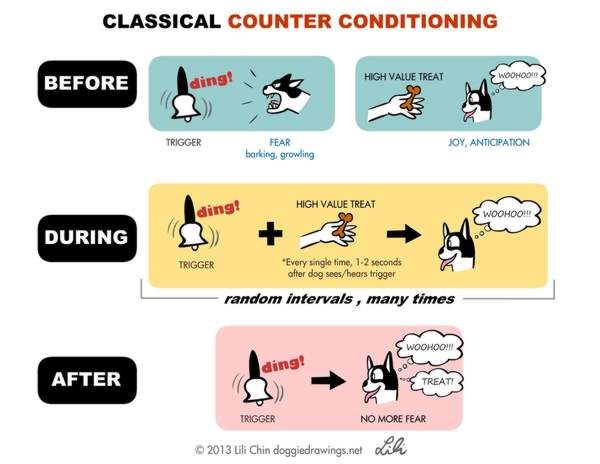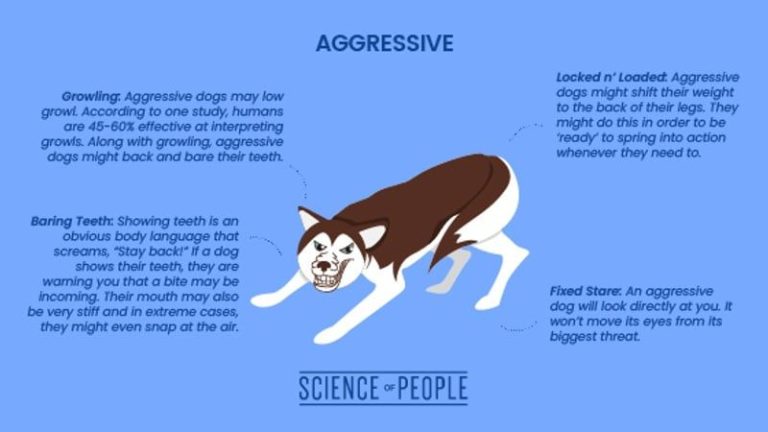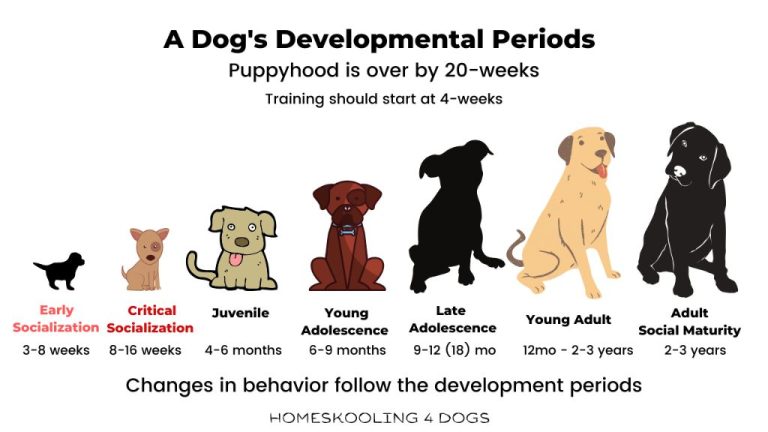Counterconditioning And Desensitization: Tools For Behavior Modification
Counterconditioning and desensitization are two important techniques used in behavior modification for dogs, cats, and other animals. Counterconditioning refers to training an animal to display a positive behavior in place of a negative reaction to a particular stimulus. Desensitization aims to gradually get an animal accustomed to something it finds frightening or unpleasant, through slow, controlled exposure (VCA Hospitals). Both techniques can help treat behavioral issues stemming from fear, anxiety, or phobias.
The goal of using counterconditioning and desensitization together is to change the animal’s emotional response to a particular stimulus from negative to positive. For example, if a dog is fearful of strangers, counterconditioning would involve having strangers give the dog treats to change its reaction from fear to happiness. Desensitization would then slowly expose the dog to strangers at a distance it is comfortable with, gradually decreasing the distance over multiple training sessions until the fear response extinguishes (Animal Humane Society). When combined appropriately, these techniques can be powerful tools for modifying unwanted behaviors.
Origins
The origins of counterconditioning and systematic desensitization can be traced back to the early 20th century. Some of the key pioneers in developing these techniques include:
- Ivan Pavlov – Developed the principles of classical conditioning which laid the foundation for counterconditioning. Pavlov discovered that an organism could be conditioned to respond to a neutral stimulus by pairing it with an unconditioned stimulus. This could also work in reverse to countercondition an undesired response.
- John B. Watson – Applied Pavlov’s concepts to human behavior and demonstrated that fears could be conditioned and counterconditioned in humans.
- Mary Cover Jones – Was one of the earliest researchers to study counterconditioning techniques. In 1924, she successfully used counterconditioning to eliminate a child’s fear of rabbits.
- Joseph Wolpe – Developed the technique of systematic desensitization in the 1950s as a way to treat anxiety disorders through gradually exposing patients to anxiety-provoking stimuli while having them relax.
These early pioneers established the theoretical and practical foundations for counterconditioning and systematic desensitization which went on to become widely used in behavior modification.
Sources:
[1] https://www.ncbi.nlm.nih.gov/pmc/articles/PMC6983350/
[2] https://www.sciencedirect.com/science/article/abs/pii/S0005796719302189
How Counterconditioning Works
Counterconditioning involves pairing a stimulus that elicits an undesirable response with a pleasurable stimulus in order to change the emotional reaction to the original stimulus. The process aims to create new positive associations that replace existing negative associations.
For example, if a dog is afraid of other dogs, the owner can countercondition the fear response by pairing the presence of other dogs with a reward like a treat. At first, the owner would start at a distance where the dog doesn’t reactfearfully. As the dog remains relaxed, the owner would reward the calm behavior in the presence of the other dog. Over time and repeated trials, the dog forms a new positiveassociation between other dogs and getting a treat, which diminishes the fear response.
The core principle is that a stimulus generating an unpleasant reaction can develop a new meaning through intentional pairing with something enjoyable. Gradually, the emotional response transforms from negative to positive as new neural connections are formed. Counterconditioning relies on this neuroplasticity to reshape reactions to triggers.
How Systematic Desensitization Works

Systematic desensitization is a type of behavioral therapy used to help overcome fears and phobias. It operates on the principles of classical conditioning by gradually exposing a person to the object or situation that causes anxiety while teaching them relaxation techniques. The gradual exposure works to desensitize the patient to the stimulus so that it no longer elicits an anxious response (Theravive).
The process involves creating a fear hierarchy, listing the fear-inducing stimuli from least to most anxiety provoking. The patient then learns relaxation techniques such as deep breathing, mindfulness, or progressive muscle relaxation. Once the patient can demonstrate the ability to relax, the behavioral therapist starts exposing them to the least frightening item on the hierarchy while keeping them in a state of deep relaxation. This continues slowly up the hierarchy, with the goal of the patient remaining relaxed through each progressive exposure. The idea is that the patient will gradually learn to associate the previously feared stimulus with a calm, relaxed state rather than anxiety (BetterHelp).
For example, someone with a dog phobia would start by looking at cartoon images of a puppy, then photos of puppies, videos of dogs, meeting a docile dog in person, and progressing up to being around increasingly energetic types of dogs. The goal is for the patient to eventually be fully relaxed around all types of dogs. This treatment has shown efficacy for simple phobias related to animals, heights, flying, and more (Theravive).
Key Differences
There are some key differences between counterconditioning and systematic desensitization that are important to understand (source):
Counterconditioning is an active process, while systematic desensitization is more passive. In counterconditioning, a new positive stimulus and response are actively taught to replace the unwanted behavior. The dog is given a treat when exposed to the trigger, for example, to create a positive association. In desensitization, the goal is to gradually decrease the dog’s reactivity to a trigger through controlled, limited exposures. The dog learns to remain calm but isn’t taught a replacement behavior.
Counterconditioning aims to replace an undesirable response, while desensitization focuses on reducing or lessening the response. Counterconditioning teaches the dog to perform a positive behavior instead of the problem behavior when exposed to the trigger. Desensitization exposes the dog to the trigger at a low enough level that it doesn’t react, thereby reducing the response over time through habituation.
Uses in Behavior Modification
Desensitization and counterconditioning are two powerful tools used in behavior modification, especially in treating phobias, anxiety, and aggression. The goal is to change a person or animal’s automatic emotional and behavioral responses to certain stimuli through gradual exposure and conditioning.
One of the most common applications is treating specific phobias like fear of flying or spiders. The process involves creating a hierarchy of fear-inducing situations related to the phobia, then gradually exposing the person to each one while teaching them to substitute feelings of relaxation for anxiety through counterconditioning. Over time, this conditions a new emotional reaction and reduces the automatic fear response.
These techniques can also reduce anxiety linked to real-world situations like public speaking or medical procedures. Counterconditioning helps the individual build positive associations to replace the negative, anxious feelings.
For curbing aggression, desensitization to triggers coupled with rewarding calm behavior counterconditions an aggressive reaction. It helps aggressive individuals stay in control when provoked rather than lashing out.
Overall, counterconditioning and desensitization are helpful behavior modification tools with a wide range of applications for changing emotional responses, reducing anxiety and fear, and altering automatic reactions.
Real-World Applications
Counterconditioning and desensitization techniques have been applied in various real-world settings with some notable successes. One common use case is with dogs and other pets exhibiting anxiety or fear-based behaviors. For example, a dog that is afraid of loud noises may be systematically exposed to soft noises first, then increasingly louder sounds, while being positively reinforced with treats (Source). Over time, the dog begins to associate the previously feared stimulus with something pleasant.
These techniques have also been used with children who have phobias or behavioural issues. A child afraid of needles may first be shown pictures of needles, then be in the same room as a needle, before finally being allowed to touch and see a needle up close, with each step rewarded. This gradual exposure can reduce the fear response (Source).
For trauma victims suffering from PTSD, therapists may use counterconditioning to replace traumatic associations with more positive ones. However, some limitations exist. The techniques require continued practice and reinforcement over time. There is also variability in effectiveness across settings and individuals. More research is still needed on optimal application of counterconditioning and desensitization in real-world contexts.
Cognitive Aspects
The cognitive aspects of counterconditioning and desensitization play an important role in how these techniques achieve behavior modification. Both techniques rely heavily on new learning and memory to create positive associations that override existing negative associations (Keller, 2020). When counterconditioning, the goal is to pair the problem stimulus with something positive so that over time, the positive association replaces the negative one. With desensitization, gradually increasing exposure to the problem stimulus allows new learning to take place that the stimulus may not actually be threatening. These techniques can work at both the conscious and subconscious level. An individual can purposefully and mindfully practice counterconditioning and desensitization techniques, actively making new associations and lessening emotional reactions. However, especially when properly implemented over time, the emotional learning also happens below the level of conscious awareness. The techniques reshape the subconscious emotional reactions and instincts that get triggered by the problem stimulus (Animal Humane Society). So while conscious practice is important, the success of counterconditioning and desensitization relies significantly on facilitating new subconscious learning and emotional conditioning.
Considerations
There are some ethical issues and potential problems to consider when using counterconditioning and desensitization techniques:
Individual differences in animals means these techniques may not work for every animal. Some animals may become sensitized instead of desensitized, leading to increased reactivity. It’s important to monitor the animal’s response and adjust the training accordingly. If an animal becomes sensitized, the process should be stopped (VCA).
There are also ethical concerns with forcing animals into situations that provoke fear and anxiety solely for training purposes. The techniques should aim to improve the animal’s quality of life, not just obedience. Flooding, or overwhelming an animal with the fear stimulus, is controversial and risks traumatizing the animal (Stellato et al., 2019).
It’s important to gradually build up exposures to avoid overwhelming the animal. A professional who understands animal behavior and ethics should guide the process. Owners should not attempt counterconditioning without expert guidance, as incorrect implementation risks worsening the animal’s behavior problems.
Conclusion
In summary, counterconditioning and systematic desensitization are two complementary techniques that can be very effective for behavior modification. Counterconditioning associates the trigger with a positive outcome, while systematic desensitization gradually exposes the individual to the trigger in a controlled way. Though distinct, using these techniques together provides the most robust results.
The impact and importance of these techniques is clear – they allow for changing unwanted behaviors and emotional responses through conditioning principles rather than punishment or force. This promotes more ethical and humane behavior modification. These techniques have been successfully used in many contexts, from treating phobias and anxiety in humans, to modifying aggression and fear responses in animals. When applied correctly under the guidance of professionals, counterconditioning and systematic desensitization offer powerful tools for re-shaping behaviors. Their influence has been far-reaching in clinical settings, animal training, and beyond.






